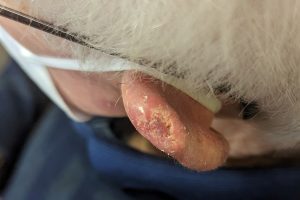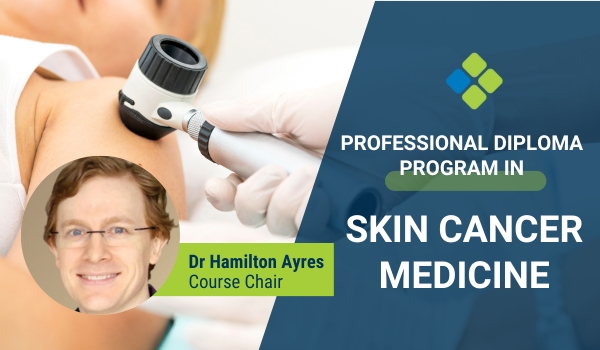Post-menopause urogenital issues
Read more about the diagnosis and management of genitourinary syndrome of menopause (GSM) - an often-overlooked condition affecting women.
.jpg)
HealthCert Education
Menopausal symptoms are wide-ranging and often vague and can onset years before menopause and persist for many years after menopause. The common symptoms, such as vasomotor symptoms, are readily recognised by most clinicians; however, memory issues, urogenital symptoms, and sexual problems are often overlooked and not immediately linked to the hormonal changes of menopause.
Learn more about this topic in the HealthCert online Professional Diploma program in Women's Health.
Menopause is the permanent cessation of menstrual bleeding and occurs in most women between the ages of 45 and 60.
Genitourinary syndrome of menopause (GSM), previously termed vulvovaginal atrophy (VVA), is a diagnosis used to describe the complex signs and symptoms of oestrogen deficiency which causes urogenital atrophy affecting the vulva, vaginal and lower urinary tract. GSM is a chronic condition affecting more than 50% of women that, without treatment, is progressive and can have a significant effect on a woman’s quality of life.
GSM is a clinical diagnosis which requires a careful history, as up to 70% will not readily discuss their symptoms with a healthcare provider. Therefore, it is important to proactively screen for symptoms of GSM in relevant patient groups.
Women with GSM may have a variety of symptoms. Vulvovaginal symptoms include dryness, irritation, burning, itching and changes in vaginal discharge. Sexual problems may co-present, such as dyspareunia, inadequate lubrication, and coital bleeding. Urinary symptoms include dysuria, urgency, incontinence, and frequent urinary tract infections (UTIs). Many women may have self-treated for other, unrelated conditions, such as vulvovaginal candidiasis.
When considering a diagnosis of GSM, it is important to delineate the effects of symptoms on quality of life, including sexual function. Physical examination is important to rule out differential diagnoses. In GSM, genital examination may reveal thinning of the pubic hair, vulvovaginal pallor or thinning of the vulvovaginal tissues.
Differential diagnoses such as dermatological conditions (e.g., lichen sclerosis, lichen planus, dermatitis), infection (e.g., vulvovaginal candidiasis, bacterial vaginosis, sexually transmitted infections), vaginismus or vulvodynia and malignancy should be excluded. A urine sample should be obtained to check for UTI and evidence of diabetes. Advice from a gynaecology specialist should be sought where there is diagnostic uncertainty.
Management should be patient-centred and aim to provide symptomatic relief. Lifestyle changes such as avoidance of soaps and other irritants on the genital skin and smoking cessation can be beneficial in relevant patient groups. Non-hormonal therapies such as personal lubricants and vaginal moisturisers can relieve discomfort and pain and should be offered to all patients.
Localised topical oestrogen therapies are the mainstay of treatment, and these can reverse atrophic changes in the genitalia and provide complete symptomatic relief. Localised oestrogen is available in cream and pessary form, and since systemic absorption is minimal, these therapies are suitable for most women. Where other symptoms are present, systemic hormone replacement therapy (HRT) may be more appropriate, which can be used alone or alongside localised oestrogen therapy.
Genitourinary syndrome of menopause is an often-overlooked condition affecting menopausal and post-menopausal women. Without treatment, the condition is progressive and can significantly affect the quality of life. Effective treatments are readily available and suitable for most women and work best when tailored to each woman's symptomatology.
Dr Samantha Miller, MBChB
Learn more about this topic in the HealthCert online Professional Diploma program in Women's Health.
Read another article like this one.
Engaging with this blog can help meet your annual
|
|
|
1. National Institute of Clinical Excellent (NICE)(2022). Clinical Knowledge Summary. Menopause. https://cks.nice.org.uk/topics/menopause/
2. StatPearls (2023). Vaginal Atrophy. https://www.ncbi.nlm.nih.gov/books/NBK559297/
3. Department of Health, State Government of Victoria, Australia (2022). Better Health Channel: Hormone replacement therapy (HRT) and menopause. https://www.betterhealth.vic.gov.au/health/conditionsandtreatments/hormone-replacement-therapy-hrt-and-menopause
4. Faubion, S. S., Sood, R., & Kapoor, E. (2017). Genitourinary Syndrome of Menopause: Management Strategies for the Clinician. Mayo Clinic proceedings, 92(12), 1842–1849. https://doi.org/10.1016/j.mayocp.2017.08.019
5. Farrell Am E. (2017). Genitourinary syndrome of menopause. Australian Family Physician, 46(7), 481–484 https://pubmed.ncbi.nlm.nih.gov/28697291/

 1800 867 1390
1800 867 1390


.jpg)



